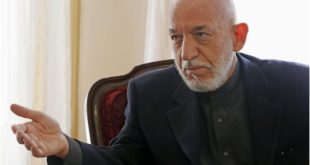By Tadamichi Yamamoto-Paradoxically, despite a horrific and seemingly endless war raging around them, there are brave citizens building peace across Afghanistan every day. The United Nations is doing its best to listen to each and every individual who stands up for peace. Indeed, the UN sees these actors as beacons of hope, lighting the way for change.
A few weeks back, women in several eastern provinces sat together and decided to nominate a delegation to engage with the Taliban with a goal to find a way to end local violence. This was not an easy decision for them to make. These women, disturbed at the cost of war in their own neighborhoods, did not, of course, act alone. They are a part of a much larger social spectrum, which includes male relatives, religious leaders, and even children. The brave women of Kunar not only demonstrated an incredible amount of courage, but they have reminded me that it is possible for individuals to stand against adversity by speaking up and insisting on peace, even in the most difficult circumstances.
We at the UN have a mandate to assist Afghans as they seek a solution to their conflict. Any future peace must be inclusive, drawing on the threads in a patchwork peace process from province to province, district to district. In Afghanistan there are many small examples that display an inclusive attitude – one that is essential to a lasting peace in Afghanistan.
The analogy of an Afghan carpet works well to describe the process. Why? Peace must always include a social component – a stitching together of a social fabric that has been shredded by war.
Afghan women, in particular, are excellent peace weavers. Women and men – I can tell you from my own conversations and observations – both impact positive change on the ground through empowering peace activism, increasing solidarity and influencing narratives about how we all understand peace. These collective Afghan weavers create momentum for peace across the country.
It is important, in my view, to be aware of all the work for peace being done from Kunar in the East to Herat in the West. For example, at a recent meeting, Dr. Habiba Sarabi, the deputy chair of Afghanistan’s High Peace Council, brought together 36 women from 3 provinces. The individual initiatives put on display the creative will of all participants, including from one Kandari woman, who explained how she had changed “60 minds in 60 days” through conversation and debate. She recalled one male elder, who after initially reacting to her overtures with outright hostility, eventually invited her into his home to speak about peace with his daughters.
This is the kind of dedicated leg-work that is desperately needed from both men and women to create a social consensus that not only leads to a political agreement, but will also provide the foundation for peaceful living after such an accord has been reached.
Much more can be done to encourage non-violent peace activism on the ground and amplify the message that community leaders carry. Many Afghans I listen to are demanding an end to violence and any further destruction of the social fabric. Their stories, woven together, give me hope that, in the coming months, more Afghans will work together at a grass roots level to repair trust and drive reconciliation.
I am convinced that it is from often unseen and varied acts of courage and commitment that Afghans will shape their own history. For each time a man or a woman stands up for peace, and acts selflessly to give peace as a gift to others, it creates a new thread of hope for all of us.
From many small and shining threads, carefully crossed with each other and woven together, Afghanistan as a nation can fashion a stable, open and peaceful future.
Tadamichi Yamamoto is the Secretary-General’s Special Representative for Afghanistan and the Head of the UN Assistance Mission in Afghanistan (UNAMA).
 Afghanistan Times
Afghanistan Times




